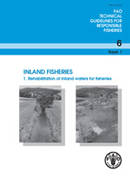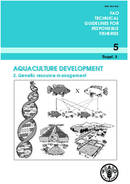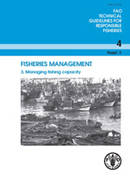出版物
Awareness of the limitations of a single-species approach to fisheries management has led to global acceptance of the need to adopt a wider ecosystem approach to fisheries (EAF) assessment and management. Applying EAF in management requires the application of scientific methods and tools that also go beyond the single-species approaches which used to be, to a large extent, the exclusive sources of scientific advice. Managers and decision-makers must now find management solutions that take into...
Many rivers, lakes and other inland waters have been modified and degraded by human activities. Rehabilitation of degraded systems and mitigation of impacts of ongoing stresses are needed to preserve ecosystem services and fisheries, and are of a high priority if the aquatic biodiversity of inland waters is to be conserved. A number of technical solutions for rehabilitation and mitigation are available to restore habitat diversity, provide for environmental flows and ensure longitudinal and lateral...
These technical guidelines have been developed to support sections of FAO’s Code of Conduct for Responsible Fisheries on aspects of genetic resource management in aquaculture. Guidance is provided on broodstock management and domestication, genetic improvement programmes, dissemination programmes for genetically improved fish, economic considerations in genetic improvement programmes, risk assessment and monitoring, culture-based fisheries, conservation of fish genetic resources, gene banks, a precautionary approach and public relations. The effective management of genetic resources, risk assessment...
Overcapacity is a key factor contributing to the decline in many of the world’s fisheries. The FAO International Plan of Action for the Management of Fishing Capacity (IPOA-Capacity) encourages States to address this problem through capacity management in order to align fishing capacity with the sustainable use of their fish stocks.The purpose of these Guidelines is to aid stakeholders and fisheries managers in the development of National and Regional Plans of Action for the Management...
These Technical Guidelines on Health management for responsible movement of live aquatic animals have been developed to support sections of FAO’s Code of Conduct for Responsible Fisheries (CCRF) addressing responsible fisheries management (Article 7), aquaculture development (Article 9), international trade (Article 11) and fisheries research (Article 12). The objective of these guidelines is to assist countries in reducing the risk of introduction and spread of serious transboundary aquatic animal diseases (TAADs). Although they deal primarily...






